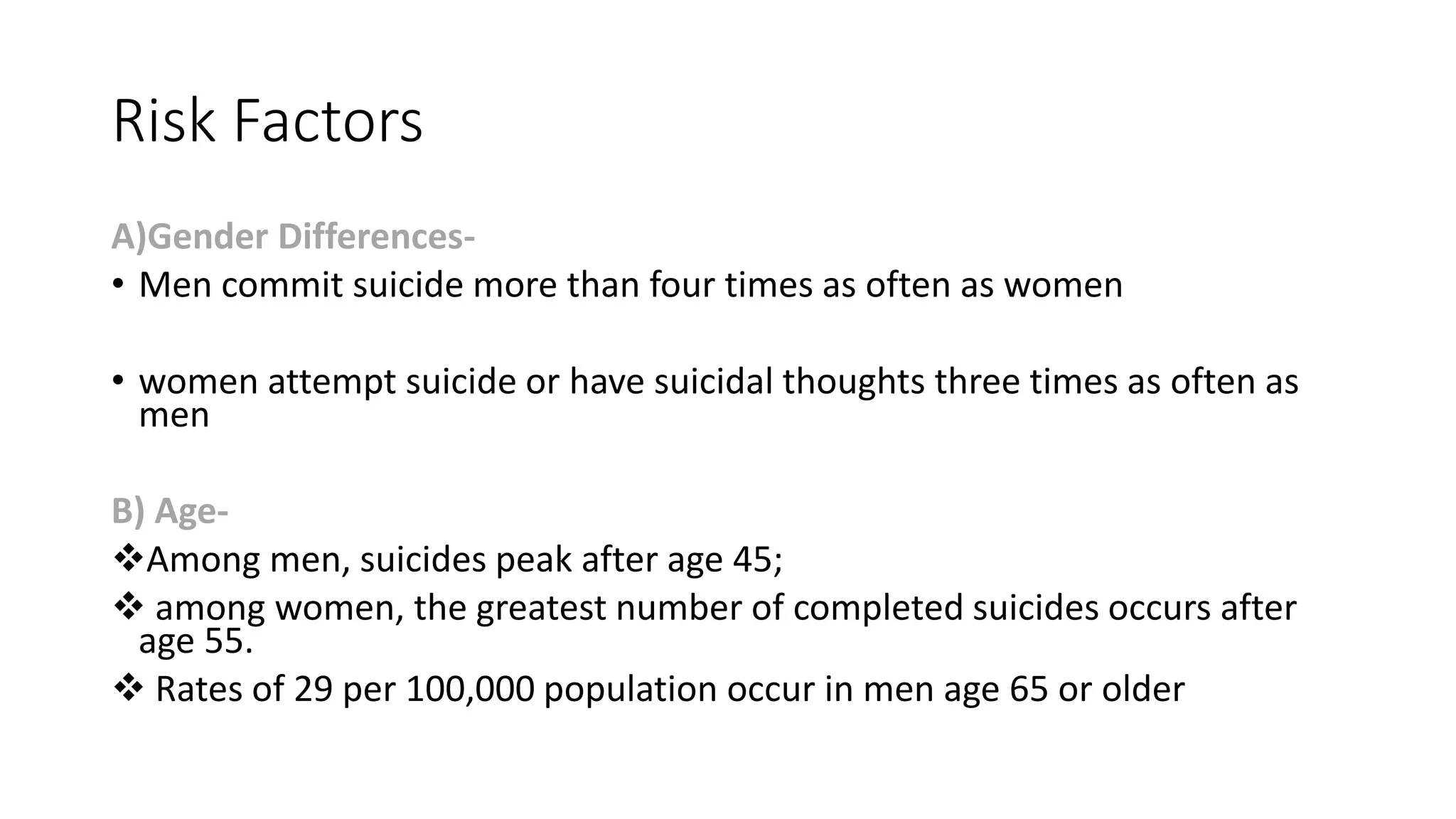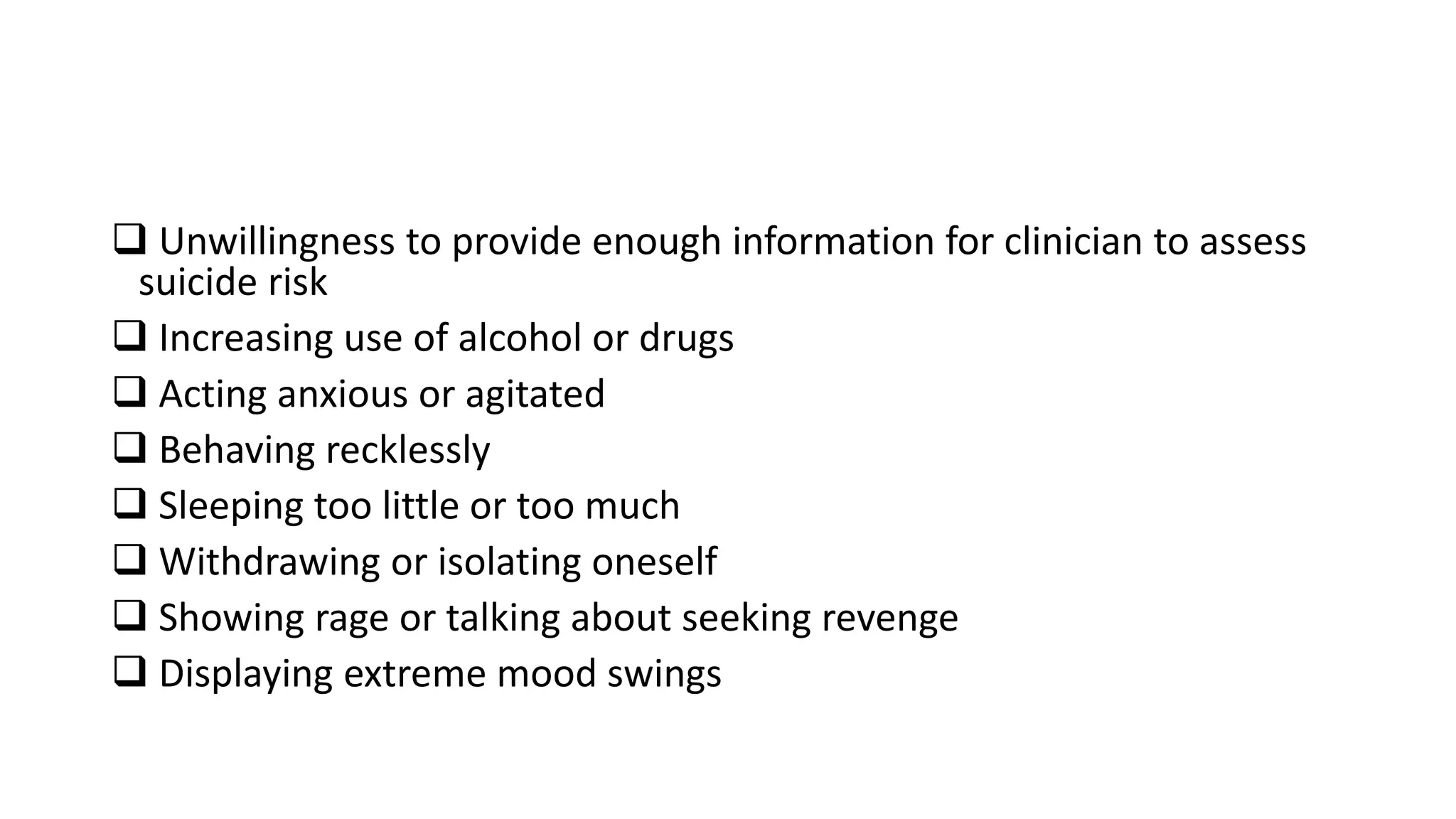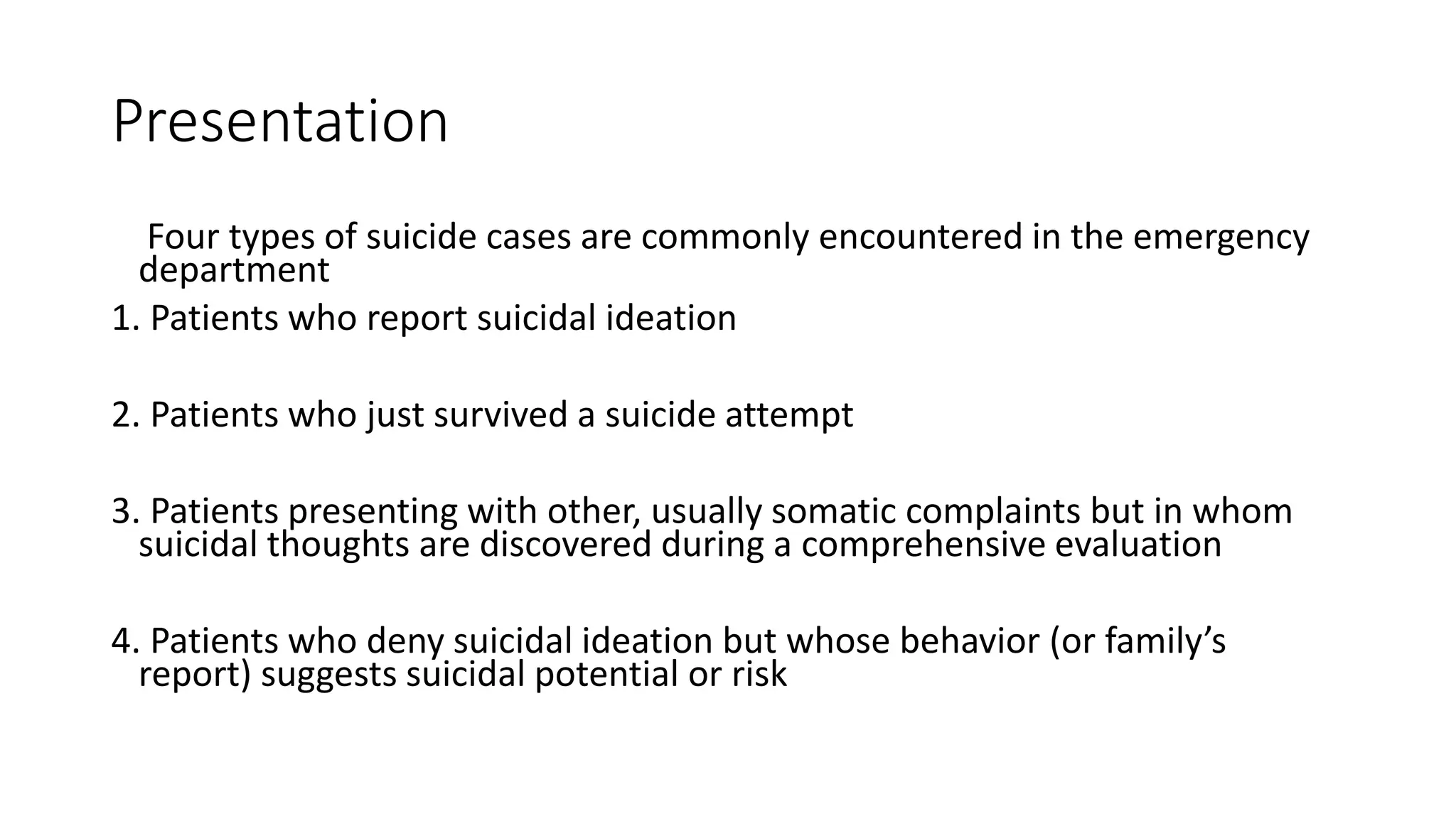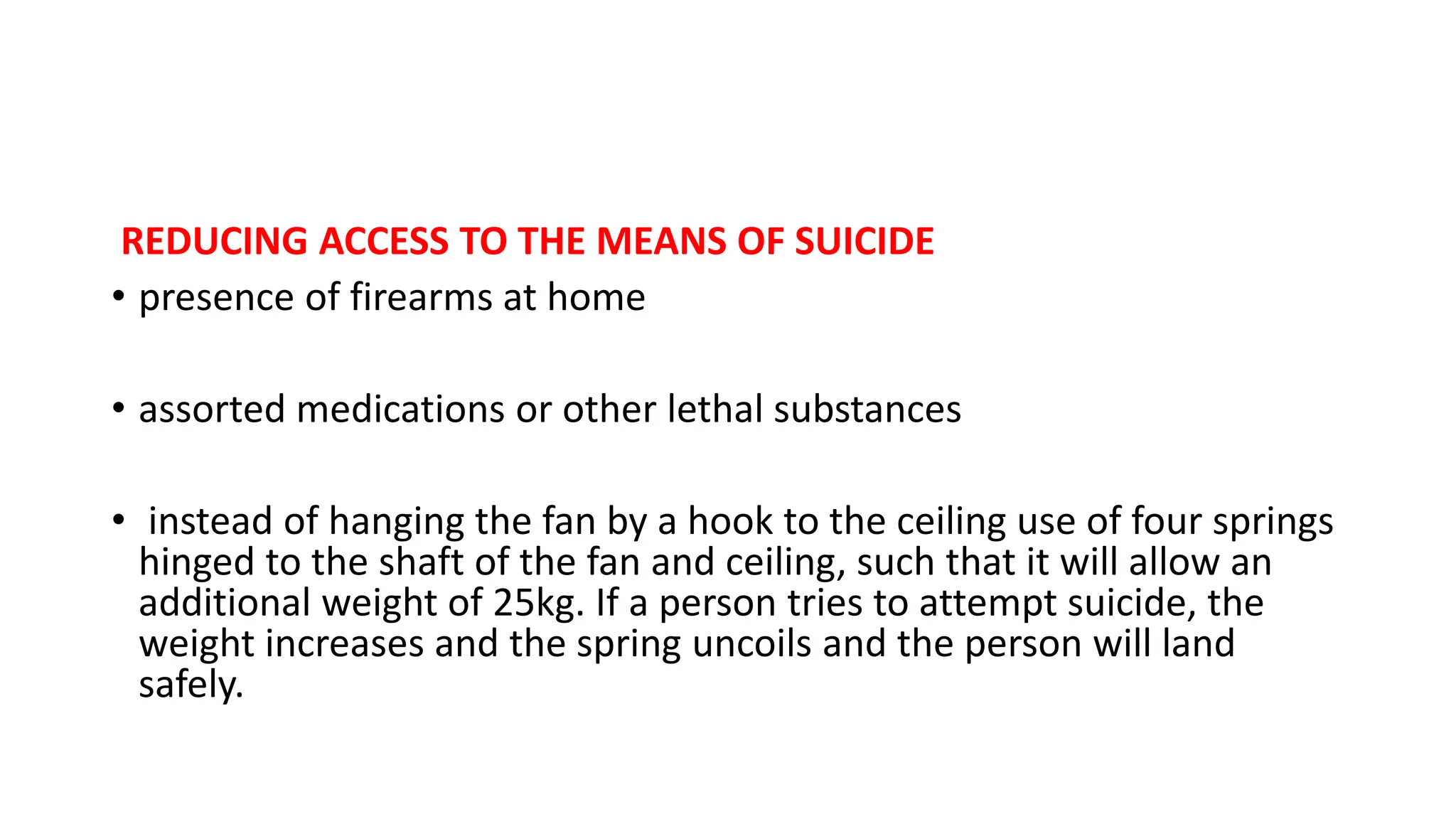The document discusses suicide risk assessment and management. It defines key terms related to suicidal behavior and outlines epidemiological data showing a global increase in suicide rates. Risk factors for suicide are described, including mental illness, previous attempts, family history, and life stressors. Warning signs of suicide are provided. The document details components of a suicide risk assessment, including evaluation, diagnosis, risk estimation, and treatment planning. Scales for assessing suicide risk and lethality are presented. Primary prevention through education and treatment of mental illness are emphasized.





















































